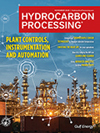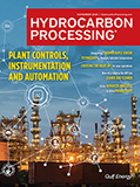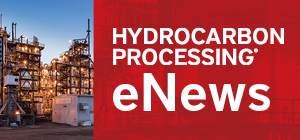Heat Transfer
HP Flashback: Excerpts from the 1950s: Capacity expands after WW2 and technologies and maintenance mature
The following is a mixture of technical articles, columns and headlines published in the 1950s by <i>Petroleum Refiner,</i> the forerunner to <i>Hydrocarbon Processing</i>.
Modularization of air-cooled heat exchangers: A “plug and play” solution
An air-cooled heat exchanger—also called an air fin cooler—is used to reject the heat from a fluid (liquid or gas, or a mixture of liquid and gas) directly to the ambient air.
HP Flashback: Operations expand and technologies advance during global conflict: Excerpts from the 1940s
This articles details several case studies on the use of x-ray technology for inspection purposes. This includes for the inspection of casings, forgings and welded structures, among others.
Enhanced reboiler for C3 splitter heat pump improves energy efficiency and reduces CO2 footprint
Energy efficiency, carbon dioxide (CO<sub>2</sub>) footprint reduction and the minimization of material requirements are becoming key drivers of our daily decisions in all industry sectors.
HP Flashback: Operations, processes and safety evolve and advance: Excerpts from the 1930s
The following is a mixture of technical articles, columns and headlines published in the 1930s by <i>The Refiner and Natural Gasoline Manufacturer</i>, the forerunner to <i>Hydrocarbon Processing</i>.
Case study: Challenges in the selection of a helical baffled exchanger
In a greenfield project, a proprietary heat exchanger<sup>a</sup> has been found to be preferable to conventional shell-and-tube (S&T) exchangers to optimize the total lifecycle cost (i.e., capital, operating, installation and maintenance costs).
Maximize value and successfully revamp a fired heater
Fired heaters are facing scrutiny because they contribute to the global emissions of carbon dioxide (CO<sub>2</sub>) and nitrogen oxides (NO<sub>x</sub>).
Gas-side fouling effects on transfer-line exchangers
Transfer-line exchangers (TLEs) are specific shell-and-tube heat exchangers installed out of hydrocarbons steam cracking furnaces for olefins production.
Bolting material bolts-up the exchanger design
Shell-and-tube heat exchangers use multiple girth flange joints based on their Tubular Exchangers Manufacturers Association (TEMA) type to assemble shell and tube sides.
HP Flashback: Advancing processing technologies and refining operations: Excerpts from the 1920s
The following is a mixture of technical articles, columns and headlines published in the 1920s by <i>The Refiner and Natural Gasoline Manufacturer</i>, the forerunner to <i>Hydrocarbon Processing</i>.

- Honeywell to supply integrated automation systems for flagship UK carbon capture projects 12/4
- Aduro Clean Technologies collaborates with ECOCE to advance plastics recycling in Mexico 12/4
- FincoEnergies launches GoodFuels B15: A reliable and compliant drop-in biofuel for inland shipping 12/4
- DevvStream, Southern Energy Renewables target low-cost, carbon-negative SAF and green methanol 12/4
- AFPM: Revised fuel economy standards would put CAFE back on solid legal footing 12/4
- ITT introduced a secondary containment system for its ICM metallic magnetic drive process pump 12/4




